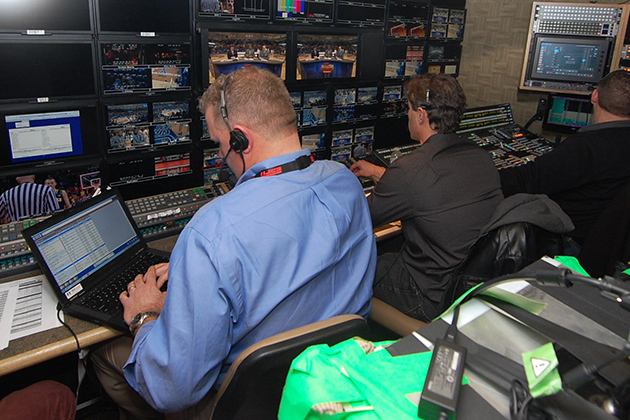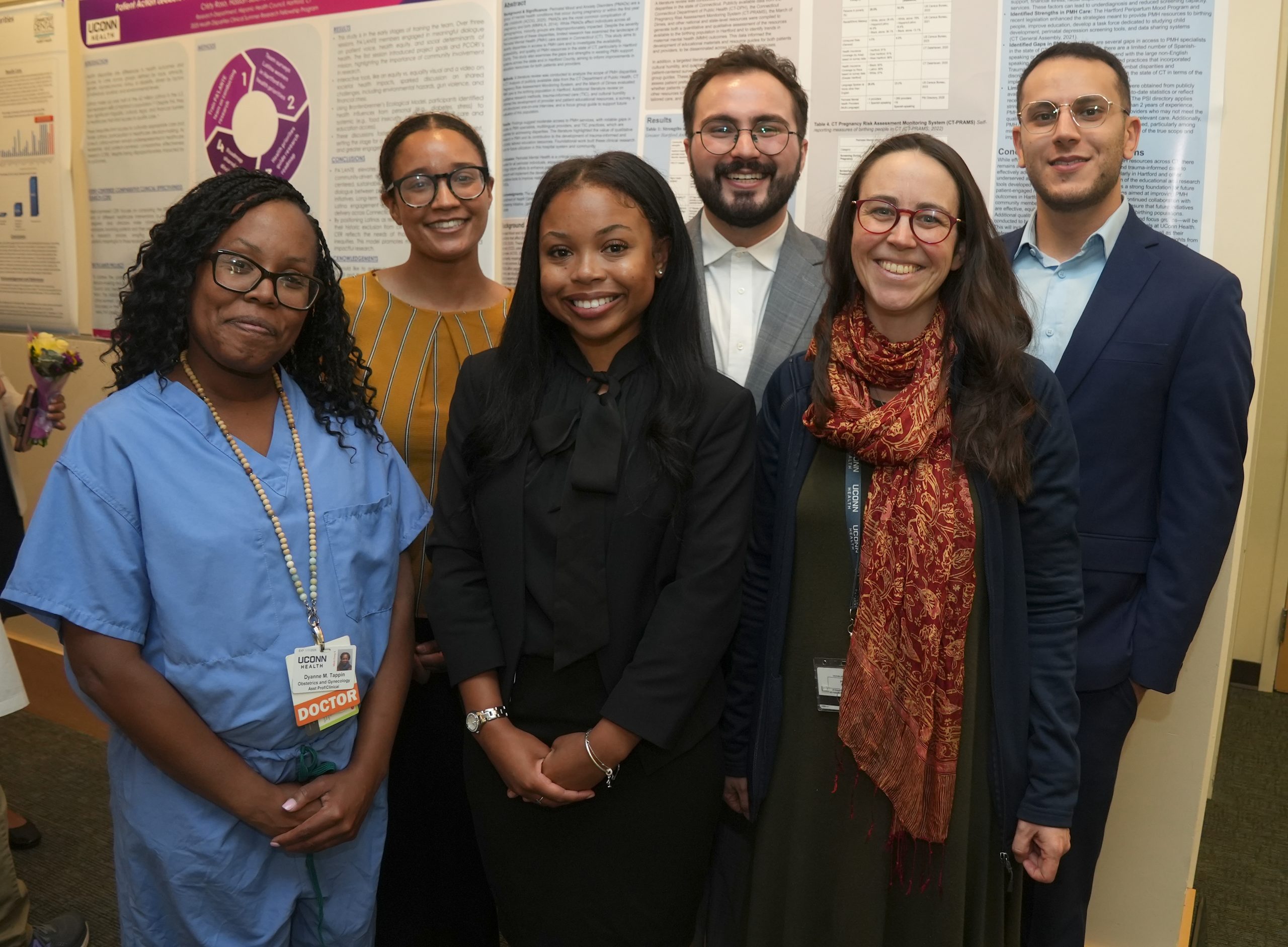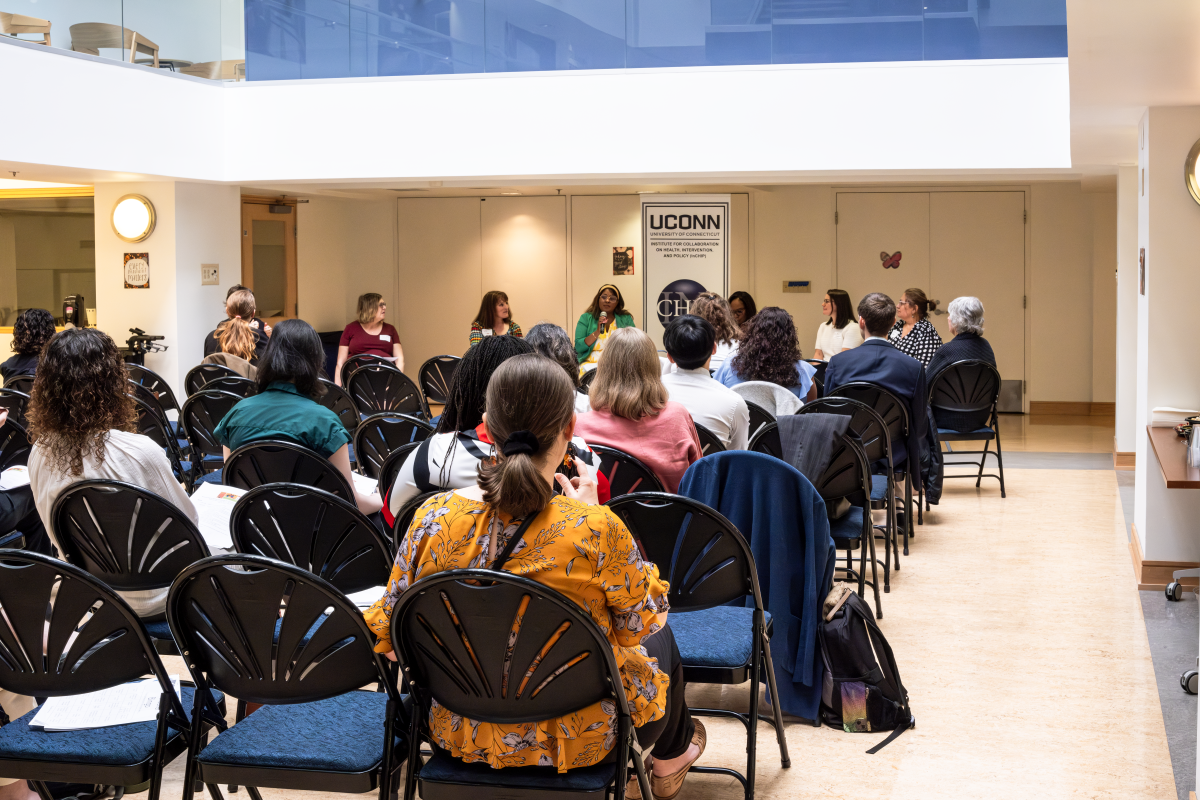
When ESPN’s GameDay broadcast for basketball returned to Gampel Pavilion for the seventh time on Saturday, the sold-out crowd provided the kind of energy that producer Brad Austin hopes will be present for the national broadcast that culminates each week in a prime-time contest between top basketball programs.
“It helps the broadcast when you’re in a venue where the fans are into it,” Austin said just before the American Athletic Conference game between No. 18 Louisville and the Huskies. “That translates into our guys. We share the excitement. Hopefully we’re an extension of the fan in some way. Sure we’re bringing some expertise to the table that we hope is valuable, but feeding off the energy of the crowd is huge, too. It doesn’t matter where you go. If the crowd is into it, these guys are going to respond.”
With students returning to Storrs after intersession break to wear “Olliewood” promotion shirts provided to fans, there was abundant energy was well as high volume throughout both the GameDay show, which previews the primetime game and recounts the entire day’s schedule of contests, and the UConn-Louisville match-up, which the Cardinals won 76-64.
The energy and volume carried through the miles of television cable that snaked out from the game floor in Gampel, down the corridor of a storage tunnel, and outside to the production trucks just outside the building that are the heart of ESPN’s remote broadcast.
The ebullient Hall of Fame analyst Dick Vitale was welcomed with an explosion of cheers as he waded into the student section, and later when DeAndre Daniels ’15 (CLAS) led a Huskies fast-break and flew to the basket for a missed dunk, a roar from the crowd went up that was echoed in a loud “Ohhhh!” inside the main production truck.


Broadcasting a live event on television always has the potential for unexpected developments. Because each week’s GameDay show follows a series of games from around the country, there is always the question of how much time there will be for a scheduled hour broadcast. Michigan’s 77-70 victory over No. 3 Wisconsin ran late, delaying GameDay, but only by a few minutes.
But director Doug Holmes had to move quickly later during the pre-game show, when a there was a problem with a microphone connection. After GameDay host Rece Davis introduced Vitale for his first on-screen game comments, the analyst known for his rapid-fire style could not be heard. Holmes swiftly requested the pre-recorded moment of Vitale going into the student section, while Davis humorously noted the irony of a silent Dickie V, as the analyst is known, before the sound problem was resolved and Vitale went on to discuss the key game match-up between UConn’s leader, Shabazz Napier ’14 (CLAS) and Louisville’s Russ Smith.
“You hope to maintain a real calm, seamless environment in the truck,” said Austin, the GameDay producer. “I’d like to say it happens most of the time, but there are times it gets chaotic because it’s live television – a highlight hasn’t been cut that you thought would be, or timing is off on something you weren’t expecting. We like to call it ‘controlled chaos.’ For people who have never been into a truck, it’s amazing the amount of moving parts that we have to deal with.”
During the broadcast, all eyes in the production truck focus on the front wall containing the 54 television monitors. As Holmes scans them to ready the 10 cameras used for the game, call up informational graphics, and order up replays of key moments in the game for viewers to see, at the same time he provides a steady stream of information to the production staff inside Gampel, the group of 10 people around him, and others in another section of the truck that is responsible for preparing replays.

The production truck is not a place for someone uncomfortable in constrained spaces. In front of the wall of monitors are three rows of long tables jammed with computers and other equipment. Members of the crew sit just inches from each other wearing headsets with microphones so they can hear Holmes and each other.
As the broadcast transitioned from GameDay to the game and starting lineups, Holmes rattled off a short burst of sequences that soon appeared on the on-air screen:
“American logo,” indicating the conference symbol;
“Title card,” which showed the teams playing the game;
“Dissolve 10,” alerted the cameraman focused on Louisville head coach Rick Pitino;
“Lineups are next,” cued a graphic of UConn’s starting players on pennants that appeared to unfurl from the rafters of Gampel Pavilion, but were only seen by television viewers;
“I need Coach Ollie,” found Huskies head coach Kevin Ollie surrounded by his team.
“Nice job, you guys,” said Holmes, as the sequence closed.
It was the seventh time UConn has been part of a basketball GameDay, and the fourth time as host site. The first-ever men’s basketball GameDay broadcast – modeled after the successful football GameDay that began in 1987 – was on Jan. 22, 2005, when the No. 13 Huskies played host to No. 17 Pittsburgh. The first-ever women’s basketball GameDay also took place at Gampel Pavilion place on Jan. 16, 2010, when the No. 1 Huskies hosted No. 3 Notre Dame.


